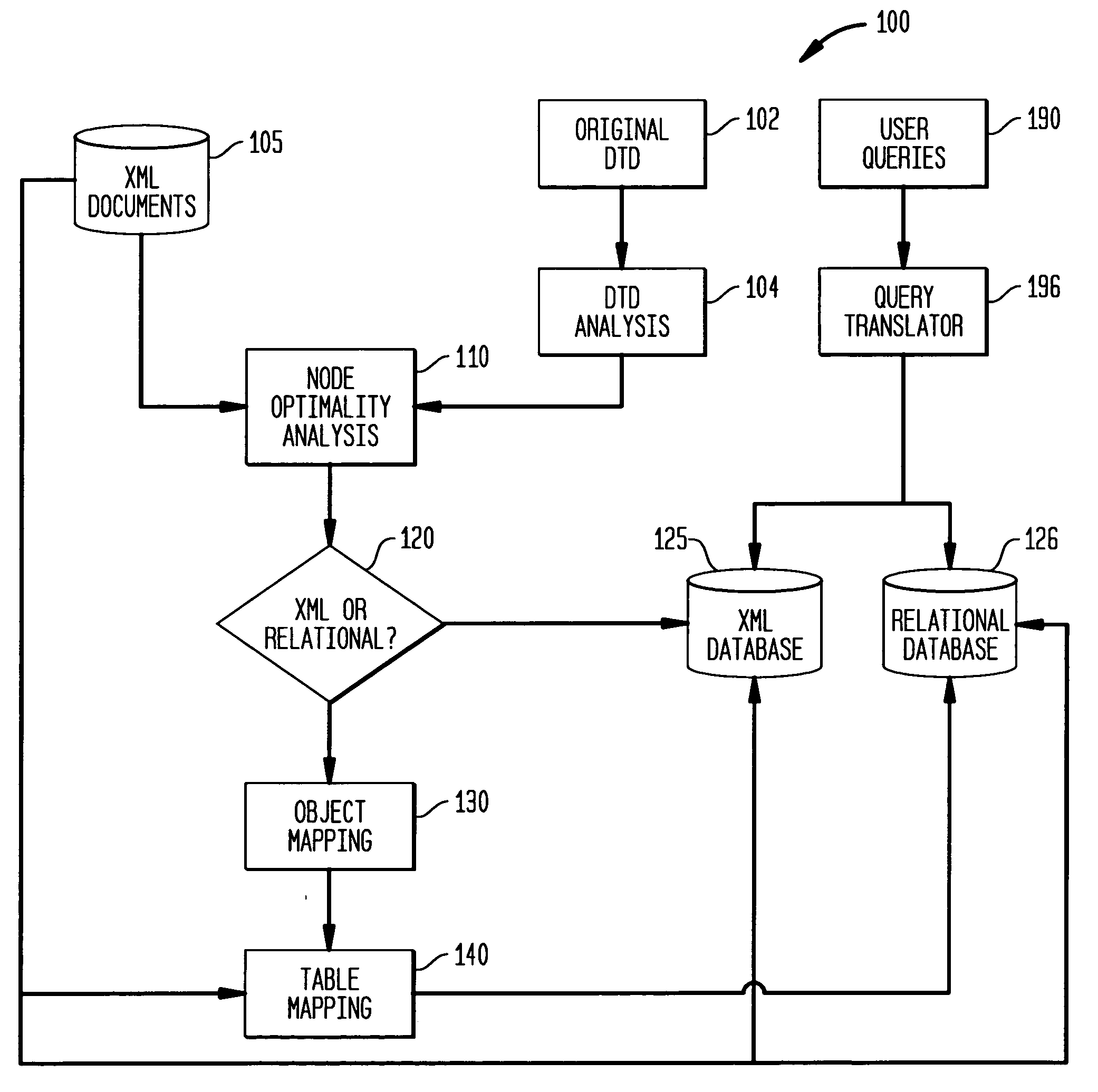Method for optimizing archival of XML documents
a technology of xml documents and archival methods, applied in the field of document management and database management, can solve the problems of system failure in most production environments, few users, and query languages such as structured query languages (xql) that lack the main features of a databas
- Summary
- Abstract
- Description
- Claims
- Application Information
AI Technical Summary
Benefits of technology
Problems solved by technology
Method used
Image
Examples
Embodiment Construction
[0038] In the following discussion, techniques are presented for optimizing processes pertaining to XML document archiving. The first such technique is a technique for archiving and querying in such a way as to optimize document searching and retrieval. An important aspect of that technique is determining in an optimal way whether a certain node as represented in the DTD should be tabularized or should be stored as an XML fragment. The second technique is a technique for managing document updating. The techniques are especially beneficial when used together.
[0039] The invention is a modular framework and method and is deployed as software as an application program tangibly embodied on a program storage device. The application is accessed through a graphical user interface (GUI). The application code for execution can reside on a plurality of different types of computer readable media known to those skilled in the art. Users access the framework by accessing the GUI via a computer. ...
PUM
 Login to View More
Login to View More Abstract
Description
Claims
Application Information
 Login to View More
Login to View More - R&D
- Intellectual Property
- Life Sciences
- Materials
- Tech Scout
- Unparalleled Data Quality
- Higher Quality Content
- 60% Fewer Hallucinations
Browse by: Latest US Patents, China's latest patents, Technical Efficacy Thesaurus, Application Domain, Technology Topic, Popular Technical Reports.
© 2025 PatSnap. All rights reserved.Legal|Privacy policy|Modern Slavery Act Transparency Statement|Sitemap|About US| Contact US: help@patsnap.com



